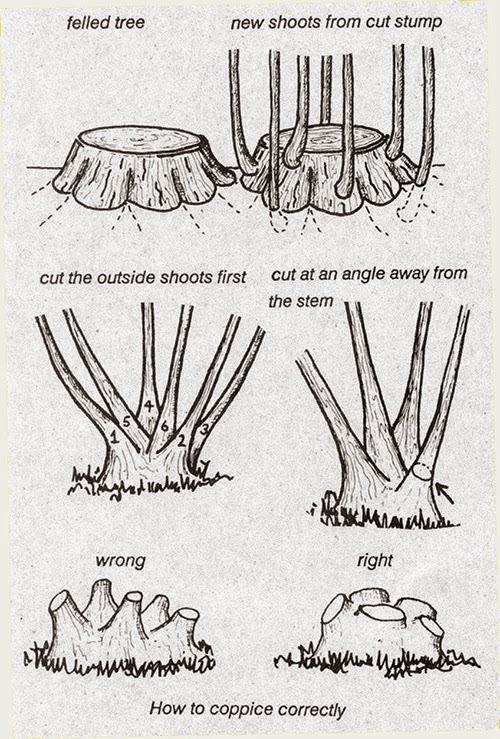
However, there are cultural and wildlife benefits from these two silvicultural systems, so both can be found where timber production or some other main forestry purpose (such as a protection forest against an avalanche) is not the sole management objective of the woodland. As modern forestry ( Hochwald in German, which translates as High forest) seeks to harvest timber mechanically, and pigs are generally no longer fed from acorns, both systems have declined. In German this is called Mittelwald (middle forest). This different silvicultural system is called in English coppice with standards. Later on in Mediaeval times, farmers encouraged pigs to feed from acorns, and so some trees were allowed to grow bigger. In German this is called Niederwald, which translates as low forest. Originally, the silvicultural system now called coppicing was practiced solely for small wood production. Timber in the Sweet Track in Somerset (built in the winter of 38 BCE) has been identified as coppiced Tilia species. The curve may allow the identification of coppice timber in archaeological sites. This curve occurs as the competing stems grow out from the stool in the early stages of the cycle, then up toward the sky as the canopy closes. Coppiced stems are characteristically curved at the base. History Įvidence suggests that coppicing has been continuously practised since pre-history. The age of a stool may be estimated from its diameter some are so large - as much as 5.5 metres (18 ft) across - that they are thought to have been continually coppiced for centuries. Trees being coppiced do not die of old age as coppicing maintains the tree at a juvenile stage, allowing them to reach immense ages. Birch can be coppiced for faggots on a three- or four-year cycle, whereas oak can be coppiced over a fifty-year cycle for poles or firewood. The cycle length depends upon the species cut, the local custom, and the use of the product. Coppicing has the effect of providing a rich variety of habitats, as the woodland always has a range of different-aged coppice growing in it, which is beneficial for biodiversity. In this way, a crop is available each year somewhere in the woodland. Typically a coppiced woodland is harvested in sections or coups on a rotation. Many of the English language terms referenced in this article are particularly relevant to historic and contemporary practice in that area. The widespread and long-term practice of coppicing as a landscape-scale industry is something that remains of special importance in southern England. Many silviculture practices involve cutting and regrowth coppicing has been of significance in many parts of lowland temperate Europe. Daisugi (台杉, where sugi refers to Japanese cedar), is a similar Japanese technique. Pollarding is a similar process carried out at a higher level on the tree in order to prevent grazing animals from eating new shoots.

New growth emerges, and after a number of years, the coppiced tree is harvested, and the cycle begins anew. In a coppiced wood, which is called a copse, young tree stems are repeatedly cut down to near ground level, resulting in a stool. 308–317., doi:10.1016/j.foreco.2012.11.Coppicing is a traditional method of woodland management which exploits the capacity of many species of trees to put out new shoots from their stump or roots if cut down. “ Traditional Coppice Forest Management Drives the Invasion of Ailanthus Altissima and Robinia Pseudoacacia into Deciduous Forests.” Forest Ecology and Management, vol. “ Pollarding Trees: Changing Attitudes to a Traditional Land Management Practice in Britain 1600–1900.” Rural History, vol. “ The Use of Perches and Platforms by Broiler Chickens.” Applied Animal Behaviour Science, vol. “ Past and Recent Coppice Forest Management in Some Regions of South Eastern Europe.” Silva Balcanica, vol. “ Microclimate Patterns on the Leeside of Single-Row Tree Windbreaks during Different Weather Conditions in Florida Farms: Implications for Improved Crop Production.” Agroforestry Systems, vol. “ Effects of Short Rotation Coppice with Willows and Poplar on Soil Ecology.” Landbauforschung VTI Agriculture and Forestry Research, vol.

to determine appropriate harvesting methods." Proceedings of the 2016 COFE and DEMO international conference, September 2016.īaum, Christel, et al. " Coppicing evaluation of short rotation coppice in the southeast of the U.S.

“ Coppice-with-Standards: An Old Silviculture System with New Potential.” Forestry and Energy Review, vol.


 0 kommentar(er)
0 kommentar(er)
